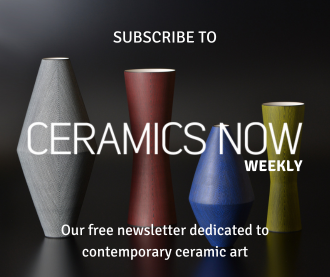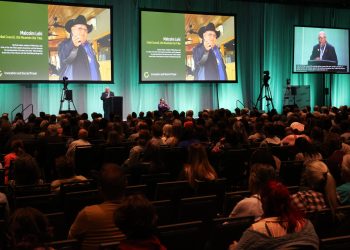Interviews
Interview with Steve Belz
You are strengthening your career as a ceramic artist year by year. What was your first contact with ceramics and when did you realize you have a passion for it? I took a ceramics class in my junior year in college, and that changed my world instantly. I was constantly in the studio. I had worked with wood and metal...
Read moreInterview with Ruth Power
You are a very young ceramic artist. When did you discover the potential of this medium? Did school have an important role in directing you on this path? Like most artists. makers or craftspeople, I have been interested in art and working with my hands from a very young age. I had a fairly basic art education in secondary school...
Read moreInterview with Jenni Ward
You are presenting yourself as a sculptor even though you have a BFA in Ceramics. What are you currently working on? Although I’ve been educated in all aspects of ceramics; pottery, functional hand-building or sculpture, I’ve chosen to focus on abstract sculptural ceramics. I feel that if I say I’m a ceramicist, people either don’t know what I’m talking about...
Read moreInterview with Suzanne Stumpf
The versatility of your work is very inspiring and makes the viewer ask himself whether he should play with your works or just to admire their universe. When did you begin to create such intricate pieces? Thank you for your kind words. I began to create interactive sculptural pieces about 7-8 years ago after I had been working in clay...
Read moreInterview with Cindy Billingsley
You are both a painter and a ceramic artist; is one medium closer to you than another? Both mediums have equal places in my heart. It mainly depends on the subject or idea I have; clay is sometimes better at conveying my passion or idea then paint is. There is nothing like the feel of clay in hand. I can...
Read moreInterview with Brian Kakas
There is visible consistency in your creation. What was the starting point for your investigation with ceramic art? The starting for my works comes from the traditional vessel and understanding the primary elements in the design. I have taken the elements of the foot, body, and lip of a pot and applied them to more structural elements within my sculptural...
Read moreInterview with Marianne McGrath
Before starting a career in ceramics, you studied Biology. In relation to your line of work, how would you characterize the relationship between Biology and Ceramics? I believe my study of biology helped create the artist I am today: one that works by questioning what surrounds me, and by creating objects based on observation in a very systematic manner. Artists,...
Read moreInterview with Deborah Britt
You are in this field for more than ten years now. Tell us how you discovered the passion for ceramics. My passion for ceramics came rather late. Having been born and raised on a farm in Northwest Missouri, far away from big city influences, exposure to the arts was minimal. Art classes in my small-town school were non-existent past grade...
Read moreInterview with Kathy Pallie
When and how did you discover the passion for ceramics? Growing up, I was always the artsy-craftsy one, making things out of all different kinds of materials, using lots of different techniques. I loved going to my Dad’s office in New York City where they produced display products/props used in retail store windows and interior displays. To me, it was...
Read moreInterview with Connie Norman
Text and pattern are seen everywhere in your works; they make a fantastic rhythm and enhance the forms. When did you start to use text on your works? My current style using text started years ago when I was making mixed media sculptures that were mostly clay integrating text. I gave myself the challenge to make something esthetically pleasing. What...
Read moreInterview with Blaine Avery
You’ve been working with ceramics for over twenty years now. Do you remember your first works? How did you evolve in time? It has been just over 20 years since I started in the field of ceramics. I remember my first works very well I know at every point in my career I strived to produce the best possible work...
Read moreInterview with Arthur Gonzalez
You are one of the most assiduous ceramic artists in the world, with hundreds of exhibitions over more than thirty years. Why did you choose this career path? If by career path you mean, “why did I choose to be an artist?” I was one of those guys who always knew that they wanted to be an artist. I honestly...
Read moreInterview with Ian Shelly
You’re a very prolific artist, with lots of exhibitions, lectures and workshops being held in the last years. How do you find the time needed for all of this? Do you also teach? Thank you for the considering me prolific, that is an adjective that has been used before to describe not only the breadth and quantity of what I...
Read moreInterview with Ian F. Thomas
You are a very creative artist, working with large scale installations, ceramic objects, sculptures, vessels and various drawings. When do you have time to transpose all your emotions and ideas into them? Thank you. I obsess about ideas. My methodology for making, for creating, has me developing many works at the same time, not just in the beginning phases, the...
Read moreInterview with Antonella Cimatti
You are a very consequent artist, having worked with ceramics all your career. Why did you embark on this journey? I was born in Faenza; I studied in Faenza at the “Ballardini” Art Institute, and I have been teaching at this same school for over 30 years. It has just been so natural to work with this material in this...
Read moreInterview with Fujita Toshiaki – Japanese lacquer artist
Not many people know that lacquer is used to make art pieces. Can you tell us more about this material and how do you use it? The Urushi tree (Rhus Vernicifera) is a member of the sumac family of trees, found in various parts of Asia. The trees produce the sap which has been used as the coating and the...
Read moreInterview with Kawabata Kentaro – Japanese ceramic artist
You were among the first contemporary Japanese artists to combine ceramics and glass when constructing a new work. How did you start to connect these materials? I wanted to to extract the ingredients from the glaze and embed them into the clay. For example, I tried to use fragments of smashed glass bottles, feldspar, silica stone and beach sand in...
Read moreInterview with Jorie Johnson – Textile artist
From functional, to decorative or aesthetical, your works also vary in techniques and materials. Tell us about your woolen felt creations. I am drawn to the painterly and sculptural characteristics of felt making with its broad capabilities as a “hard textile” but which also lends itself to soft, sensual body wraps. I like the challenge of completing a work that...
Read moreInterview with Tanoue Shinya – Japanese ceramic artist
What was the starting point for your investigation with ceramics? Do you remember your early works? When I was a student of Theology at the Doshisha University, I also belonged to the ceramic club. I was just absorbed to make something with clay in the club’s room. I worked for some textile company for two years after the graduation, and I...
Read moreInterview with Murata Yoshihiko – Japanese lacquer artist
You are a very young and talented artist. What was your first experience with art and with lacquer?I wasn’t exposed to the arts that much and didn’t know about Japanese lacquer work very well until I entered the art collage. I was interested in design and woodwork working and wanted to make the furniture for our daily life when I...
Read more













